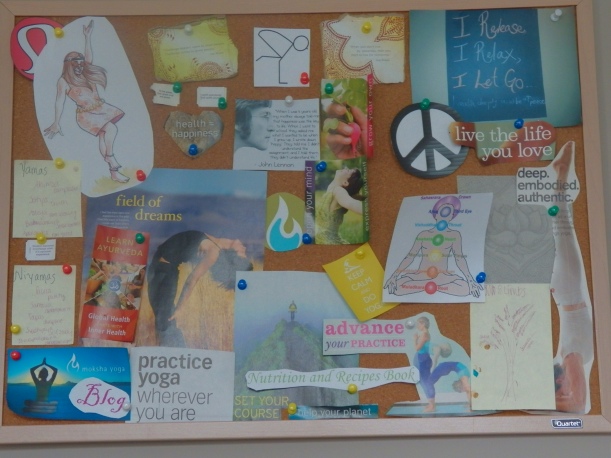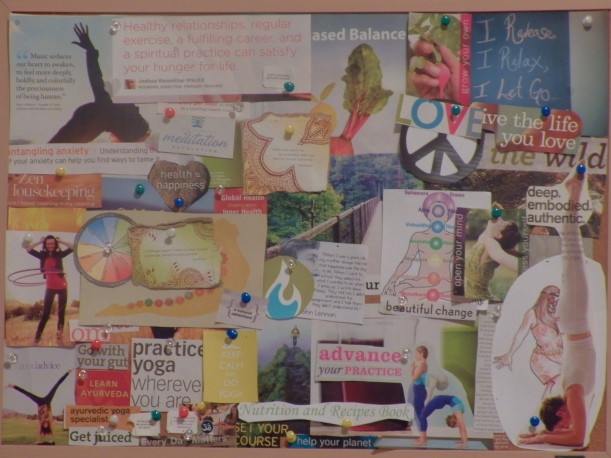
When I was in Yoga Teacher training, and going through burn out in my Speech Therapy career, I decided I needed to buy a meditation cushion. We were learning about how important meditation was, how we should be doing it on a daily basis and how it could be life changing. So when I saw a beautiful cushion in the store, I decided I needed it. It would be the thing that kick-started my meditation practice.
Instead, it became the place my dog would take naps.
My cushion was used sporadically and was often found stuck under my desk, in a corner or behind my bedroom door under a pile of clothes. It was often covered in dust and was not as worn out as I had hoped it would be. But lately, 7 years after buying it, I have found myself taking a seat on my cushion most days of the week. Some days it is for 20 minutes, and other times ti is just for one or two. Most often, I sit for about 5 minutes at a time. Meditation is slowly becoming part of my daily routine, and one of my main sources of stress-release and ease.
It seems I’m not alone.
Meditation was once something for the woo-woo, hippy-dippy tribe or perhaps the new age. It was something your crunchy aunt used to do in a field or the woods. It was not something for those in a busy, professional career with things like a family, soccer games, minivans, sports cars or a large paycheck. It was for the minimalists and those who turned against modern living. But somewhere along the way, things started to change.
Meditation, and its benefits, are now part of a modern lifestyle. Along with practices like yoga and deep breathing, meditation has gone mainstream. People everywhere, from all walks of life, are being prescribed and practicing it on a regular basis. There are apps for meditation, books and magazines, and doctors and therapist prescribing it to patients. It is now as much a part of a healthy lifestyle as diet and exercise. Much of this integration is due to the large amounts of research that support meditation as a way to transform your daily habits, by rewiring your brains coping mechanisms and stress patterns.
Here are a few ways meditation can help you:
- Research has shown that meditation is not only creates a few moments of calm in an otherwise hectic day, but it actually rewires your brain to handle stress better.
- It also helps decrease activity in the amygdala, the home of our “fight or flight” response. Too much stress an trauma can cause your amygdala to work in overdrive. Meditation has been shown to help decrease that response, so you are better able to work through stressful situations on a daily basis.
- This means that if you suffer from a lot of anxiety or stress, due to the chaos of your daily life, meditation can help you reduce it and gain some control over your day. Instead of going straight into panic mode when something arises, meditation helps your brain pause and rethink your reactions.
- Regular meditation can also help to improve your memory and perhaps even prevent or slow the progression of diseases of the mind, such as dementia and Mild Cognitive Impairment.
- This is because meditating actually helps your brain to function better. According to a study from University of Wisconsin-Madison’s Center for Healthy Minds in Mindful Magazine, regular meditation can increase the gray matter thickness of your brain, which can help you with everyday functions like problem solving, attention and memory.
- One particular meditation, according to several studies and the AlzheimerPrevention.org, chanting Sa Ta Na Ma, has been shown in studies to help treat and prevent Alzheimer’s disease and dementia. This is a chanting meditation that you perform for 12 minutes. It has a set rhythm and pattern. You can find the steps here or follow along with this guided meditation.
- Meditation also helps you to relax more, which can help reduce cortisol in your body. Cortisol is the hormone that releases when you are feeling stressed. It is a natural response to stress, but can go into overdrive when you are constantly stressed, such as when you are burnt out. This constant stream of the hormone can contribute to weight gain around your middle, increased anxiety, decreased digestion, sleep problems, heart issues and memory problems, to name a few. Meditating can help reduce and regulate your cortisol release, to help bring balance back into your body and mind.
Now that you know why meditation can be so important to reduce stress and burn out, try to make it part of your daily routine. It doesn’t have to be stressful or even take much time or effort. Try to take 5-10 minutes most days to meditate. Find a quiet place where you can sit comfortably, without distractions. If you are comfortable with it, close your eyes. Take a few deep breaths and repeat a mantra (quote or saying), count down from 50 or 100, or pay attention to your inhales and exhales. For guidance, you can try one of these downloadable meditation practices from UVA, apps like Pacifica or Headspace or even a Youtube video. If you want a live class or session, many yoga studios and retreat centers offer weekly meditation classes. You can also try one of these downloadable meditations from the Meditation and Audio Library or sign up for the “SLP ToolBox” which features even more free meditations and resources to reduce stress and burn out.
For even more, insight sand practices to use to reduce your burn out and manage stress as an SLP, check out one of these Continuing Education webinars (you’ll earn hours towards your certification!):
3 Common SLP Stressors and How to Manage Them on Xceptional ED (1.5 CMH Hours)
Managing Common SLP Stressors before Burn Out Occurs on Northern Speech Services (2.5 ASHA CEU hours .025 units)
3 Biggest Stressors for SLPs and What to Do About Them on Speechpathology.com (1.5 hours ASHA CEU .15 units)
It doesn’t matter what you try or how you decide to meditate, just find the one that feels right for you and that you can make into a regular practice. Then let me know how it goes! Leave a comment below if you have given it a try or already have a meditation practice. Which works for you and why? If you have a regular meditation practice that has helped you, please share with others to help them see the benefits and get started.
Much Love,


![]()




 This meditation is to help you reduce the anxiety and overwhelm that can come when you are feeling “ungrounded”. If you are particularly frazzled, feel like you are being pulled in all directions, or you just can’t seem to get it together, you may need to take a moment to get out of your head and back into your body. It only takes a minute once you get started.
This meditation is to help you reduce the anxiety and overwhelm that can come when you are feeling “ungrounded”. If you are particularly frazzled, feel like you are being pulled in all directions, or you just can’t seem to get it together, you may need to take a moment to get out of your head and back into your body. It only takes a minute once you get started.










 A few weeks ago I started back to work after the summer break. We had moved, my daughter was now in preschool and I had a brand new office I was getting set up. I had a new caseload for work and I was creating a more expanded schedule than the year before. There was time built into my schedule for lunch each day. I also planned flex time in the mornings and afternoons, to prepare for the day. This included self-care such as meditation or yoga or a walk outside. My daily SLP self-care routines had become pretty important to me for a few reasons.
A few weeks ago I started back to work after the summer break. We had moved, my daughter was now in preschool and I had a brand new office I was getting set up. I had a new caseload for work and I was creating a more expanded schedule than the year before. There was time built into my schedule for lunch each day. I also planned flex time in the mornings and afternoons, to prepare for the day. This included self-care such as meditation or yoga or a walk outside. My daily SLP self-care routines had become pretty important to me for a few reasons.